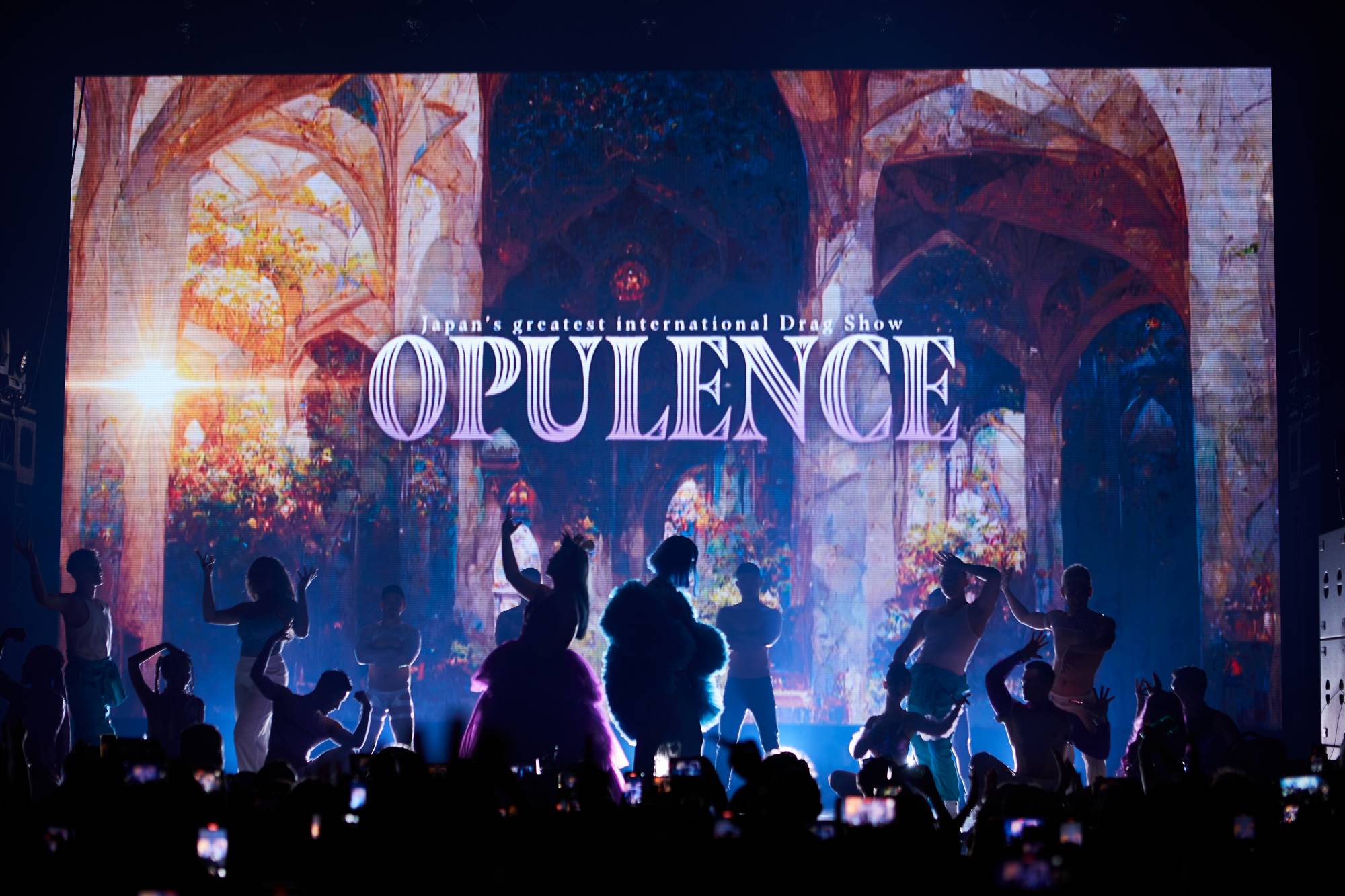For better and for worse, Opulence is a difficult show for the vertically challenged — I think as I bounce my tiny 5-foot-2-inch frame up and down for a view of the drag queens at Zepp Shinjuku. The concert hall is filled with nearly 1,500 fans, and I cannot contain my sense of pride and awe that a drag show in Tokyo could attract so many people.
May 31 saw Vol. 2 of drag queens Vera Strondh and Tom Hall (aka Gyoza Tonin-Anang)’s passion project, Opulence, take the stage. The largest drag show organized by Tokyo locals to date, Opulence featured a line-up of three of the stars from TV’s “RuPaul’s Drag Race”: Raja Gemini, Pangina Heals and Denali Foxx. That was in addition to five Japan-based queens — Sasha B. Savannah, Okini, Sera Tonin, Kaguya and Vera Strondh — and a whole fleet of dancers, make-up artists, dress-makers and media crews. I was one happy reviewer, weaving in and out of the backstage area with my press pass.
The show begins with an ensemble dance number, the main performing queens weaving back and forth across the stage with their own troupes of back-up dancers. As a drag queen myself, I can say that it’s challenging but pretty typical to plan and perform your own solo number. Coordinating over 20 people, however, has taken weeks of choreography, rented studio spaces and rehearsal.

















With your current subscription plan you can comment on stories. However, before writing your first comment, please create a display name in the Profile section of your subscriber account page.